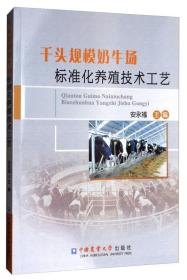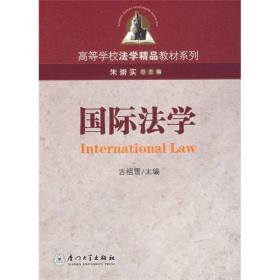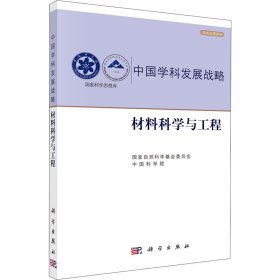
材料科学和材料工程[英文版]
¥ 7.18 1.9折 ¥ 38 全新
库存3件
山东泰安
认证卖家担保交易快速发货售后保障
作者Don W.Pashley 著
出版社世界图书出版公司北京公司
出版时间2003
版次1
装帧平装
货号605 12-23
上书时间2024-12-24
- 在售商品 暂无
- 平均发货时间 24小时
- 好评率 暂无
- 最新上架
商品详情
- 品相描述:全新
图书标准信息
- 作者 Don W.Pashley 著
- 出版社 世界图书出版公司北京公司
- 出版时间 2003
- 版次 1
- ISBN 9787506259385
- 定价 38.00元
- 装帧 平装
- 开本 21cm
- 页数 233页
- 正文语种 英语
- 【内容简介】
-
newlyappointedornewlypromotedprofeoratimperialcollegearerequiredtogiveaninaugurallectureonaubjectoftheirchooing.theprofeorinevitablytalkaboutareaoftheirubjectonwhichtheyareexpertbutthelecturearepreentedinuchawaythattheyappealtoawiderangingaudiencefromthoewhohavelittleknowledgeoftheubjecttothoewhoareparativelyexpertinthefield.theewrittenverionofixuchlectureareaimedatreaderwhohaveomeknowledgeofandinteretinmaterialcienceandengineering.theyhouldalobeofinterettothoewhoarewellveredintheubject....
精彩内容:
finallywear i a proce which mot of u would be familiar with where, through the action of li force and the ubequent damage,mechanical eroion or chemical degradation of the olid bodie occur.it i a frutrating and an expenive proce and many of u pend a ignificant amount of our ine and reource repairing the conequence of uch damage.for my own part,the mot ignificant damage will be the recement of my clothe, my hoe,my automobile engine or my automobile tyre.we can think of other example.
o.the remit within the interface engineering context ha many levei of requirement.at imple level,it might be to.optimie the proceing of a olid or the rheology of a paint upenion.15 at a more divere level.it could be to optimie the behaviour of a fabric conditioner or a hair conditioner or at a later tage perha wondering about our ability to minimie the wear and improve the friction ofay.automobile tyre.18 the remainder of the paper will be divided into four or five general part in order to exemplify the progreion of my own interet in what i believe ha been the way that thi ubject ha developed in the lat 30 year.the following ection will deal with what i conider to be the very intereting hitorical context.the next ection will decribe ome of the rudiment of the principle available for interpreting interface engineering problem.two major ection will foliow thee.the firt one being ome example of the 1 tribology heritage in a claical ene of interface to cover uch thing a tranport,etic,ballitic.thi i plemented by another ection which deal with ome facet of the intefface within aemblie and the conequence upon the rheological repone or proceing behaviour of thee material.the finai maior ection will deal with the topic of frictional wall and the conequence of interface in ome apect of the proceing of folid,in the main tarche and ceramic pate.finally. - 【目录】
-
preface
professor b.j.briscoe
slippery customers; sticky problems
1.interface engineering——the scope
1.1.adhesion
1.2 friction
1.3.lubrication
1.4.damage
1.5.wear
2.historical contexts
3.principles of interpretation
3.1.the adhesion model of friction
3.2.the deformation models
3.3.other processes
4.tribological interfaces; some examples
5.interfaces in assemblies
6.solid processing and production engineering; frictional walls
7.final reflection
8.challenges for the future
9.personal remarks
acknowledgements
references
professor a.j.kinloch
sticking up for adhesives
1.introduction
2.interfa contact and intrinsic adhesion
2.1.introduction
2.2.mechanisms of intrinsic adhesion
2.3.the bon of fibre-cor0ite materials
2.4.the use of organometallic primers
3.hardening the adhesive
3.1.introduction
3.2.chemical aspects
3.3.multiphase adhesives
4.predicting the strength and service life of adhesive joints
4.1.introduction
4.2.the fatigue behaviour of adhesive joints
5.conclusions
acknowledgements
bibliography
professor d.b.holt
magical materials for motionless machines
1.introduction
1.1.half the story of materials
1.2.the other half of the materials story
2.grain boundary electroluminescence in gap
3.scanning electron microscope electron beam induced
current (ebic) and cathodoluminescence (cl)
3.1.monte carlo electron trajectory simulations
3.2.applications of scanning electron microscopy to optoelectronic devices
4.scanning electron microscope characterisation of quantum confined structures
5.magical materials for motionless machines
acknowledgements
references
professor alan atkinson
interfaces in materials- if you cant beat them,
join them
1.introduction
2.grain boundaries- historical development
2.1.early metallography
2.2.the twentieth century
3.ode grain boundaries and high temperature
corrosion of metals
4.interfaces between two different solids
4.1.ode layers on metals
4.2.interfaces in ites
4.3.epitaal interfaces between semiconductors
5.interfaces between solids and liquids
5.1.processing ceramics
5.2.high strength cements
5.future opportunities and conclu remarks
acknowledgements
references
professor rees d.rawlings
brittleness- a tough problem
1.introduction
2.deformation of metals
3.ceramic ponents and fibres
4.ites
5.ceramic matrix ites
6.metal matrix ites and functionally graded materials
7.listening to cracks
acknowledgements
references
contents
professor larry l.hench
the story of bioglass: from concept to clinic
1.the beginning
2.the problem
3.the concept: bioactive bon
4.bioactive glasses
5.four paths of development
6.bioactive ites
7.molecular tailoring of surface chemistry
8.conclusions
acknowledgements
references
index
点击展开
点击收起
相关推荐
— 没有更多了 —
![材料科学和材料工程[英文版]](https://www0.kfzimg.com/sw/kfz-cos/kfzimg/4572755/7b9deac014363190_b.jpg)










![材料科学和材料工程[英文版]](/dist/img/error.jpg)










以下为对购买帮助不大的评价